 2001 Peugeot 307 Dimensions, Size & Specs
2001 Peugeot 307 Dimensions, Size & SpecsMeasurements of the 2001 Peugeot 307, engineered for optimal performance and comfort
| Dimensions | |
|---|---|
| Length: | 4202 mm165.4 in13.8 ft |
| Width: | 1730 mm68.1 in5.7 ft |
| Height: | 1512 mm59.5 in5.0 ft |
| Ground Clearance: | 120 mm4.7 in0.4 ft |
| Trunk Capacity: | 340-341 liter12.0-12.0 cu ft |
| Trunk Capacity (Max): | 1328 liter46.9 cu ft |
| Weight Specifications | |
| Curb Weight: | 1142-1335 kg2518-2943 lbs |
| Maximal permitted Weight: | 1620-1810 kg3571-3990 lbs |
| Tire Specifications | |
| Rims Sizes: |
|
| Tire Sizes: |
|
The Peugeot 307, produced between 2001 and 2005, is a compact hatchback that blends practicality with comfortable urban driving. With an overall length of 4202 mm (165.5 inches), a width of 1730 mm (68.1 inches), and a height ranging from 1510 to 1512 mm (59.4 to 59.5 inches), the 307 suits drivers looking for a vehicle that fits well in city environments while offering enough interior space for passengers and cargo. The car's curb weight varies between 1142 and 1335 kg (2518 to 2945 lbs), indicating a balance between lightweight design and structural integrity, while its maximum weight ranges from 1620 to 1810 kg (3571 to 3992 lbs), reflecting its carrying capacity and stability on the road.
Cargo space is one of the 307's notable features, providing 340 to 341 liters (12 to 12 cubic feet) of trunk volume with seats up and expanding dramatically to 1328 liters (46.9 cubic feet) when the rear seats are folded, accommodating larger loads effortlessly. Its ground clearance stands at a modest 120 mm (4.7 inches), suitable for urban and suburban driving conditions.
The Peugeot 307 comes with rim options sized at 15 and 16 inches, paired with tire sizes 195/65 R15 and 205/55 R16, offering a good balance between ride comfort and handling. This generation 307 hatchback exemplifies Peugeot’s approach to creating a compact car that meets everyday needs with an emphasis on spaciousness, moderate road presence, and flexible cargo carrying capability. It's ideal for drivers seeking a reliable and versatile vehicle within the compact hatchback segment.
Discover the standout features that make the 2001 Peugeot 307 a leader in its class
Have a question? Please check our knowledgebase first.
The Peugeot 307 hatchback produced between 2001 and 2005 features a length of 4202 mm (approx. 165.5 inches), a width of 1730 mm (about 68.1 inches), and a height ranging from 1510 mm to 1512 mm (roughly 59.4 to 59.5 inches). These dimensions provide a balanced footprint ideal for urban driving and parking while ensuring sufficient interior space for passengers and cargo.
The curb weight of the Peugeot 307 hatchback ranges from 1142 kg to 1335 kg (approximately 2518 to 2945 lbs), depending on specific trim levels and equipment. Its maximum allowable weight is between 1620 kg and 1810 kg (about 3571 to 3992 lbs). This weight range supports the vehicle's structural integrity and performance capabilities, influencing factors such as fuel efficiency, handling, and load capacity.
The Peugeot 307 provides a luggage capacity of 340 to 341 liters (approximately 12 to 12 cubic feet) with the rear seats in the upright position. When the rear seats are folded down, the storage volume expands significantly to 1328 liters (about 46.9 cubic feet). This flexible cargo space allows for practical use whether carrying everyday groceries or larger items, making the 307 a versatile hatchback option.
The Peugeot 307 features a ground clearance of 120 mm (approximately 4.7 inches). This ride height provides a comfortable balance between low center of gravity handling and everyday usability. While it may not be optimal for rough off-road conditions, it suffices for typical urban and suburban road surfaces, offering good stability and reducing the risk of scraping on speed bumps or uneven roads.
For the 2001-2005 Peugeot 307 hatchback, rim sizes are 15 and 16 inches. Tire options include 195/65 R15 and 205/55 R16 sizes. These tire and rim combinations support a ride that balances comfort and grip while accommodating the vehicle's weight and suspension design. The choice between 15-inch and 16-inch rims typically affects handling characteristics and ride quality.
Yes, the Peugeot 307 hatchback with a length of 4202 mm (165.5 inches), width of 1730 mm (68.1 inches), and height just over 1510 mm (about 59.5 inches) fits comfortably into a standard residential garage. Most single-car garages have dimensions exceeding 2.4 meters (7.9 feet) width and 5 to 6 meters (16.4 to 19.7 feet) in length, providing ample space for door opening and maneuvering. Owners should still consider any added fixtures or storage around the garage space for ease of parking.
Compared to its predecessor, the Peugeot 306, the 307 is notably larger in every dimension. The 307's length is 4202 mm (165.5 inches) versus the 306's approximate 4060 mm (159.8 inches), width at 1730 mm (68.1 inches) versus around 1695 mm (66.7 inches), and height slightly taller at about 1510-1512 mm compared to the 306’s roughly 1410 mm (55.5 inches). This increase in size reflects Peugeot's move toward greater interior space, comfort, and practicality, making the 307 better suited for families and daily use with more cargo room.
The Peugeot 307 stands competitively among compact hatchbacks of the early 2000s, such as the Volkswagen Golf IV, Ford Focus first generation, and Opel Astra G. With a length of 4202 mm (165.5 inches) and a width of 1730 mm (68.1 inches), it is generally on par or slightly larger than competitors like the Golf IV (approx. 4255 mm length, 1699 mm width) and Focus (about 4230 mm length, 1752 mm width). Its differing height and interior cabin design offer slightly more headroom and cargo versatility in some trims, which appeals to buyers prioritizing space and practicality in the hatchback segment.
The Peugeot 307's moderate length (4202 mm/165.5 inches) and width (1730 mm/68.1 inches) create a vehicle size that is manageable in urban environments while providing good cabin space. Its relatively low height and ground clearance of 120 mm (4.7 inches) enhance stability and aerodynamic efficiency. This size allows for confident handling and ease of parking in city conditions yet retains enough space for comfortable seating and cargo, making it popular among urban drivers seeking a balance between compactness and practicality.
The Peugeot 307 hatchback weighs between 1142 kg and 1335 kg (about 2518 to 2945 lbs) depending on trim and engine specifications. Lighter versions tend to offer improved fuel economy and more agile handling, whereas heavier models with added features and stronger engines may compromise slightly on fuel efficiency but provide enhanced performance and comfort. This weight range is typical for compact cars of its class and era, balancing structural strength with responsive driving dynamics.
Discover similar sized cars.
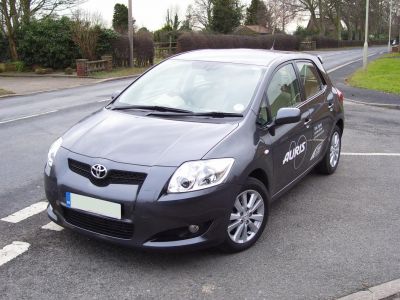
| Model Year: | 2007 |
|---|---|
| Length: | 4220 mm166.1 in |
| Width: | 1760 mm69.3 in |
| Height: | 1515 mm59.6 in |
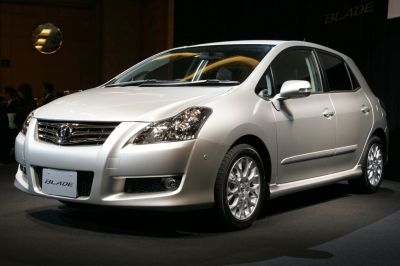
| Production: | 2006-2011 |
|---|---|
| Model Year: | 2007 |
| Length: | 4220 mm166.1 in |
| Width: | 1760 mm69.3 in |
| Height: | 1515 mm59.6 in |
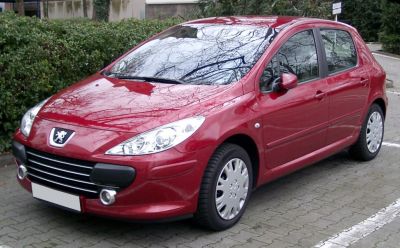
| Production: | 2005-2008 |
|---|---|
| Model Year: | 2005 |
| Length: | 4212 mm165.8 in |
| Width: | 1746 mm68.7 in |
| Height: | 1510 mm59.4 in |

| Production: | 2023-present |
|---|---|
| Model Year: | 2023 |
| Length: | 4264 mm167.9 in |
| Width: | 2070 mm81.5 in |
| Height: | 1564 mm61.6 in |

| Production: | 2019-2023 |
|---|---|
| Model Year: | 2020 |
| Length: | 4261 mm167.8 in |
| Width: | 2070 mm81.5 in |
| Height: | 1568 mm61.7 in |
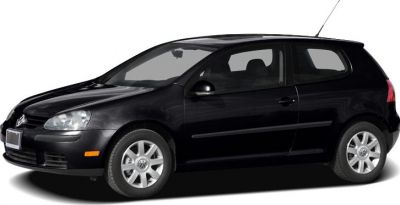
| Production: | 2006-2009 |
|---|---|
| Model Year: | 2006 |
| Length: | 4210 mm165.7 in |
| Width: | 1759 mm69.3 in |
| Height: | 1479 mm58.2 in |
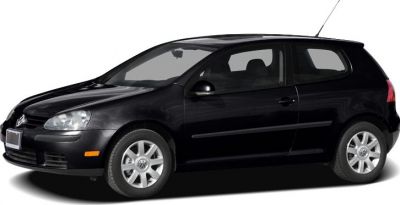
| Production: | 2006-2009 |
|---|---|
| Model Year: | 2006 |
| Length: | 4210 mm165.7 in |
| Width: | 1759 mm69.3 in |
| Height: | 1479 mm58.2 in |

| Model Year: | 2022 |
|---|---|
| Length: | 4200 mm165.4 in |
| Width: | 2055 mm80.9 in |
| Height: | 1505 mm59.3 in |
